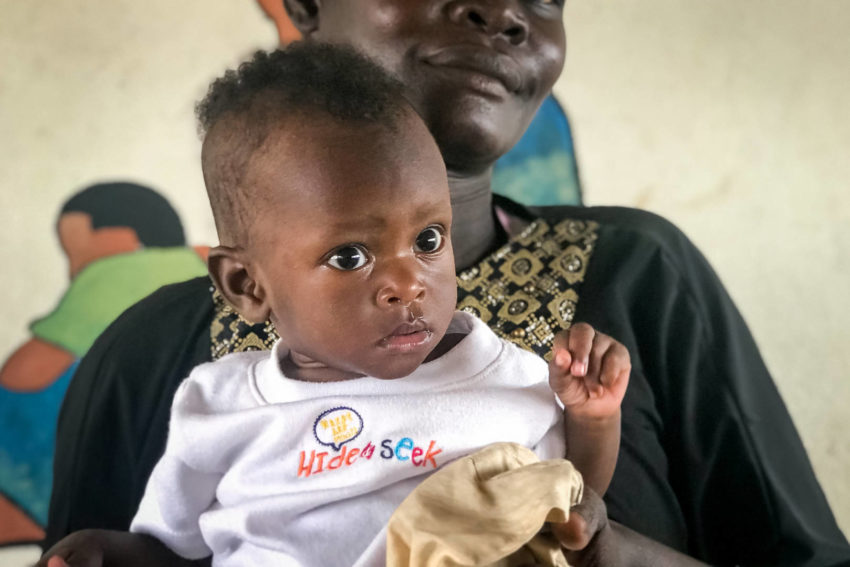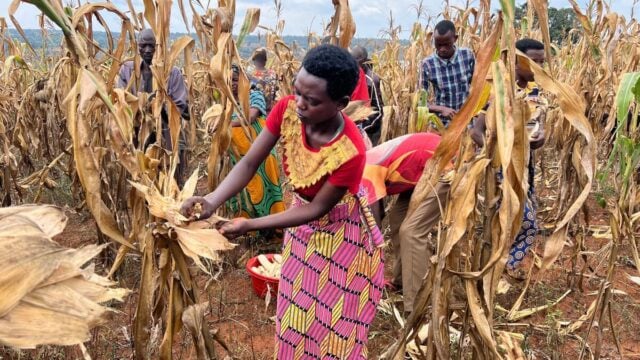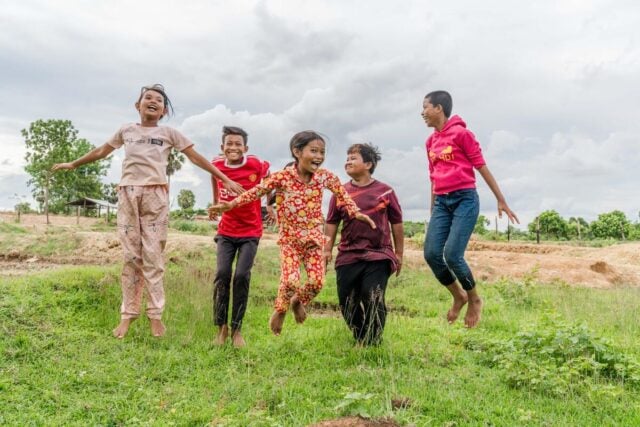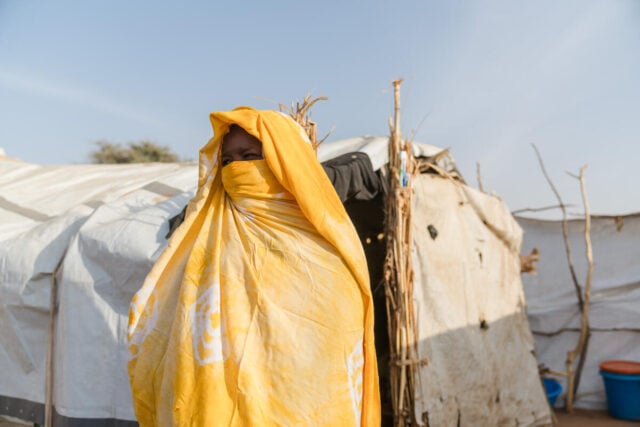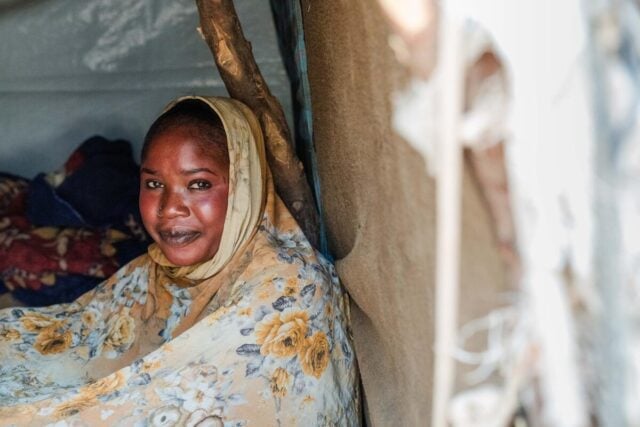At a time in his life when 6-month-old Yassir Ibrahim should’ve been growing a lot, he wasn’t gaining weight.
“I cannot feed him properly. We do not have enough food at home,” says 26-year old Sarah John about her son when he was diagnosed with severe acute malnutrition.
According to UNICEF’s 2019 report on South Sudan, about 860,000 children under 5 are estimated to be acutely malnourished, which includes over a quarter million children with severe acute malnutrition — children like Yassir.
Nutrition services for malnourished children
Sarah already has four children despite her youth. She lost her father, a soldier, during fighting in their village. With six people at home, her mother struggled to feed them. That need drove Sarah to marry Ibrahim. At the age of 16, she got pregnant for the first time.
Her husband, Ibrahim, now 35, was a student, but dropped out of school to support his growing family. Yet his job as a restaurant cleaner only earned him 500 South Sudanese pounds (US$1.7) per day. Most of the time, the family eats okra, beans, and anything else they can afford from the market. But 6-month-old Yassir got sick. He wasn’t gaining weight.
Sarah took him to a local hospital, where she was advised against breastfeeding him.
A World Vision community nutrition volunteer learned about Yassir’s condition and convinced Sarah to go to the center in Gurei — about a 30-minute walk from where the family lives in Juba.
World Vision has a network of community-based nutrition volunteers to help in monitoring and reporting malnutrition incidences. They identify possible cases and train mothers on proper nutrition and gardening. In more acute cases, they refer mothers to centers so their children to receive treatment.
The primary healthcare center in Gurei, one of the 12 World Vision-supported centers, sees at least 100 children with varying degrees of malnutrition every week. Last year, more than 628,000 people in South Sudan received nutrition services from World Vision. Over a five-year period, 89% of severely malnourished children we treated made a full recovery.
Addressing South Sudan’s hunger crisis
The recent U.N. Humanitarian Needs Overview describes South Sudan’s situation as still in the “grips of the humanitarian crisis,” with close to 7 million people, including children and the most vulnerable, suffering from food insecurity. World Vision has provided food and livelihood assistance to more than 689,000 people and reached out to more than 142,000 people with its cash and voucher program.
Elizabeth Atanacio, a nutrition nurse for World Vision, explained to Sarah how important it is for her to breastfeed Yassir as he grows up and never to believe anyone who tells her otherwise.
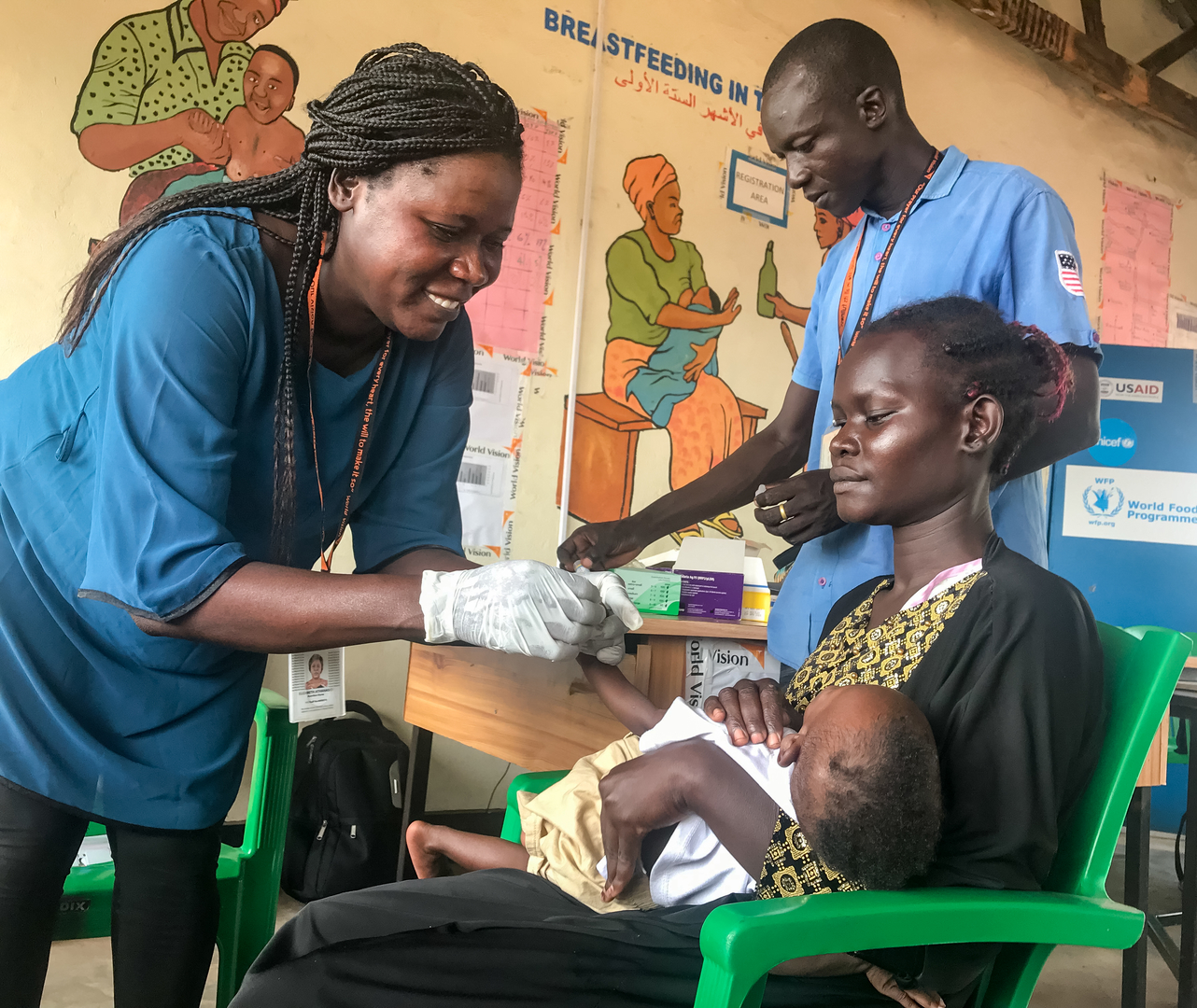
After the assessment, Yassir was admitted to the program and will get all the support he needs from the center until he fully recovers. He was tested for malaria and provided with ready-to-use supplementary food. Sarah must feed him two and a half packets per day.
Elizabeth believes Yassir’s prognosis is good. She thinks he will respond well to the treatment as he showed a strong appetite when the team did the feeding test of the supplementary food provided for children with severe acute malnutrition.
Community volunteers at the forefront of World Vision’s work
Another mom, Anjoy Abdallah, a 22-year-old transplant from the Democratic Republic of the Congo also showed up at Gurei Primary Health Care Center with her 20-month-old toddler, Mary. For the past three months, Mary had suffered with coughing, diarrhea, and frequent vomiting.
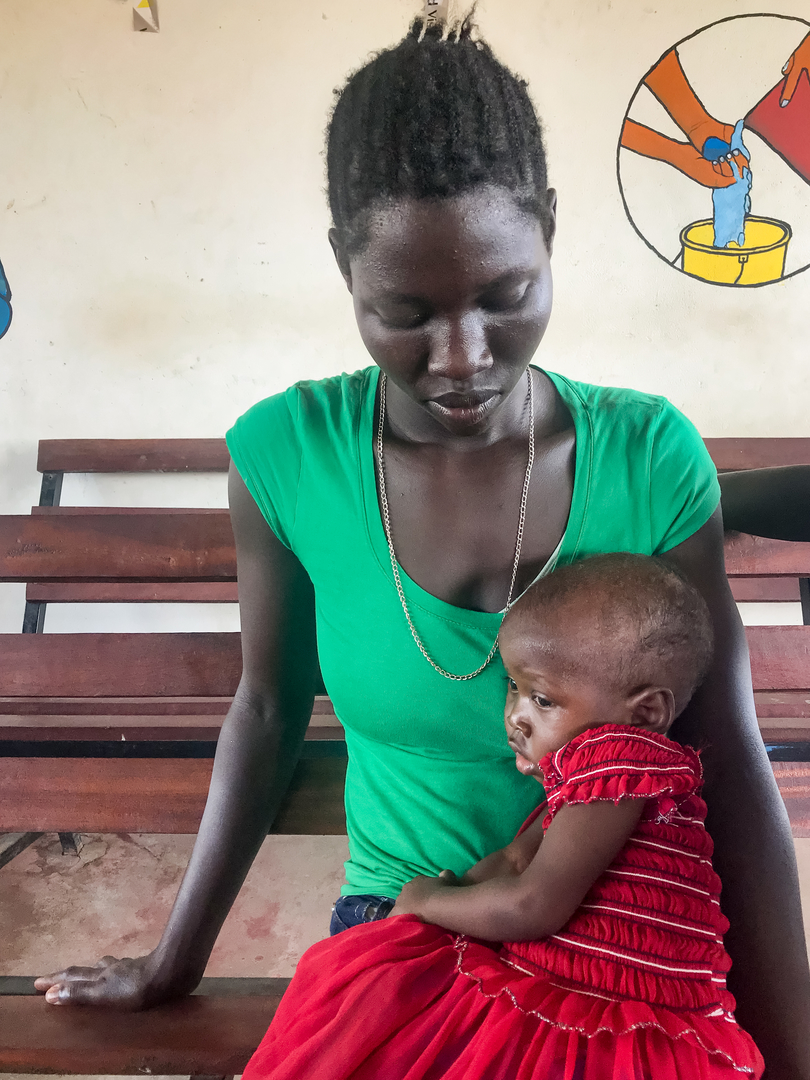
Mary looks weak and glassy-eyed, not reacting to people calling her name or trying to get her attention.
Again, it was a community nutrition volunteer who directed Anjoy and Mary to the healthcare center. Nurse Atanacio says the volunteers have helped a lot in reaching out to mothers, like Anjoy, who struggle about their children’s health and nutrition amid the hunger crisis in South Sudan.
A year after she moved to Juba, Anjoy met her husband Michael, now 26. Their first child, Nuella, is now 3 years old. After she had her second baby, Mary, Anjoy did not see Michael again. She learned that he already had a family. So, to support her children, Anjoy works odd jobs and gets some support from her sister.
Elizabeth diagnosed Mary with moderately acute malnutrition. Anjoy breastfeeds her, but her supply of milk is always not enough. Through the center, she receives ready-to-use supplementary food.
Center staff provide Anjoy with a thorough briefing on how to feed Mary and schedule her for a follow-up appointment in the center. If Mary’s condition does not improve after few weeks, then she will have another medical test and be referred for further treatment.
Last year, World Vision was able to help more than 438,000 children and lactating mothers. But with the alarming hunger crisis in South Sudan, World Vision’s Nutrition Project Manager Damaris Wanjiku worries over the “heartbreaking” state of the children’s health. Many more need assistance.
